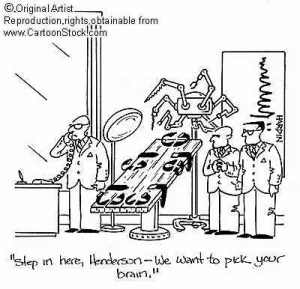I’ve written several posts on metaphor… here, here, and here.

In these truly bizarre times when the world has been closed down by the Covid 19 pandemic, we see the power of metaphor. For many, but especially in the USA, UK and even France, the pandemic is a war. This is, of course, metaphoric and makes sense within a frame often used by media and politicians. Within the frame of war, we naturally understand things like life and death; enemies (seen and not seen); battles; front lines; sacrifice; home front.
The virus is often referred to as an “enemy who can strike” ~ anthropomorphizing the virus with the “who” reinforces the enemy as person(s), as a target within the war metaphor. This personification also gives a moral dimension to the virus, it has intention to cause harm, which has been extended to its place of origin (the China Virus) and the repeated efforts to connect the virus to an intentional act of national aggression. This extension also constructs an us and them relationship.
 Another component of the metaphor is the characterization of health care workers as being on the front line, doing their duty battling the virus. They are described as heroes in their fight, but they work without the supplies and supports troops in battle enjoy. Some health care workers reinforce this metaphor, others reject it.
Another component of the metaphor is the characterization of health care workers as being on the front line, doing their duty battling the virus. They are described as heroes in their fight, but they work without the supplies and supports troops in battle enjoy. Some health care workers reinforce this metaphor, others reject it.
But a pandemic is not a war, a virus has no morality or intention, the virus is not intimidated by force or bombastic rhetoric, and health care workers are not soldiers. The strategies that will contain the virus are inconsistent with war… isolation, for example. Nonetheless, the frame of war with its metaphoric content is meant to rally people in a particular way, to signal who has responsibility and who does not. When rural parts of the USA resist stay at home orders because there are few cases of Covid 19 in their area they see the front line very far from them, and a battle that is being fought elsewhere thus making them safe from the enemy. The public does not embrace measures to safe guard public health, because a small group of others will defeat or at least contain the viral enemy.
The war metaphor also leads to containment of information… information is controlled, limited, and on a need to know basis. The war frame directs attention to divisions among people, to fear, to security and enforcement, and to the use of propaganda and censorship. This stands in stark contrast to countries where the war metaphor is not prevalent, and where information is shared routinely and transparently (for example… Germany, Canada, New Zealand) and through metaphors of science, medicine, and the common good.
Not only is the analogy of war misplaced on factual grounds; it also misses the possibility to cultivate an imagination that builds on narratives of peace, solidarity and social justice – and to foster a more acute understanding of how we are all fundamentally dependent on one another as inhabitants of a shared planet. (Source)
It’s all metaphors, all the time… but different metaphors construct different lived experiences with potentially dramatically different real outcomes.

 Follow
Follow


